Tortellini pie
This tortellini ‘pie’ has a casing of shortcrust pastry, fragrant and crispy to perfection, containing a filling of tempting tortellini with Parma ham and a rich mix of Bolognese sauce, mushrooms and peas. Preparing it takes a little more time than the norm and it’s obviously not a recipe to make at the last minute, but its deliciousness and amazing visual impact will reward you for all your creative culinary efforts.
Ingredients

Send the recipe
Preparation
Prepare a Bolognese sauce in advance. Line a cake tin with shortcrust pastry, first the bottom and then the sides, and prick the dough all over with the prongs of a fork. Cook the tortellini in salted boiling water, taking care to keep them ‘al dente’. Then toss them with the homemade Bolognese, with plain boiled peas and with the dried mushrooms, soaked and squeezed of any excess liquid. Then add the parmesan and the béchamel sauce, keeping a little aside. Stir well, then pour everything into the lined cake tin. Level the filling well with the back of a spoon, finish with a few more tablespoons of Bolognese and béchamel sauces and a good sprinkling of Parmesan. Top the pie with another circle of pastry, adding decorations made with the excess scraps of dough. Brush with some egg yolk. Bake at 180°C for 35 minutes.
Step by step
|
View the step by step
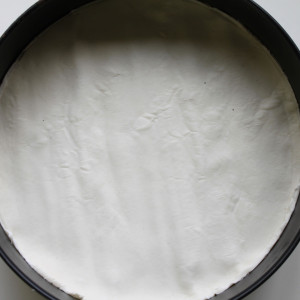
|
Line a cake tin with shortcrust pastry, starting at the bottom
|
|
View the step by step
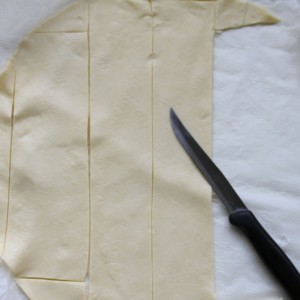
|
Cut some strips of dough from one of the circles
|
|
View the step by step
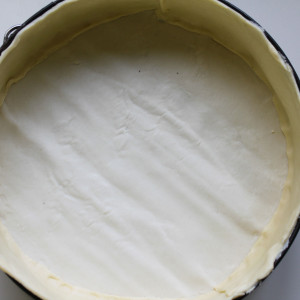
|
With the strips, line the sides of the baking tin
|
|
View the step by step
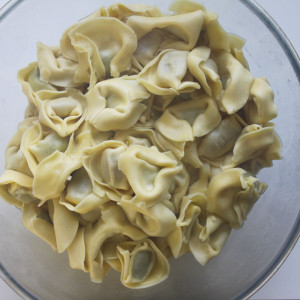
|
Cook the tortelloni until ‘al dente’
|
|
View the step by step
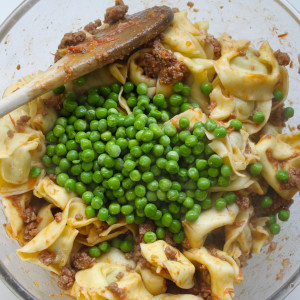
|
Mix the pasta with the Bolognese sauce and peas
|
|
View the step by step
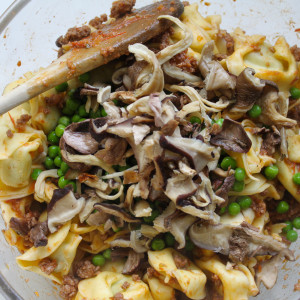
|
Add the mushrooms
|
|
View the step by step
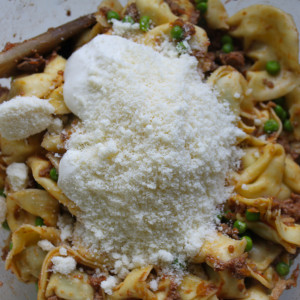
|
Add the béchamel and parmesan; level off the filling
|
|
View the step by step

|
Add some more Bolognese and some tablespoons of béchamel
|
|
View the step by step
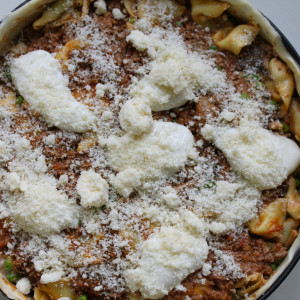
|
Sprinkle with some more parmesan
|
|
View the step by step
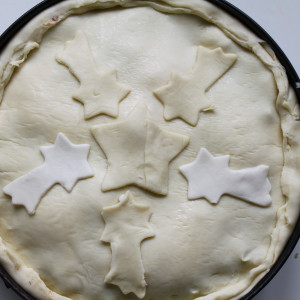
|
Cover the pie with another circle of pastry
|
|
View the step by step
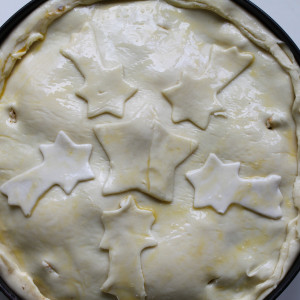
|
Brush with some beaten egg yolks
|
|
View the step by step
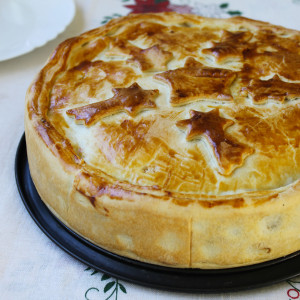
|
Bake at 180°C for 35 minutes
|
|
View the step by step
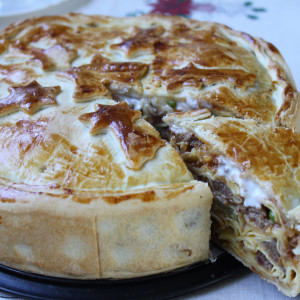
|
Serve
|




